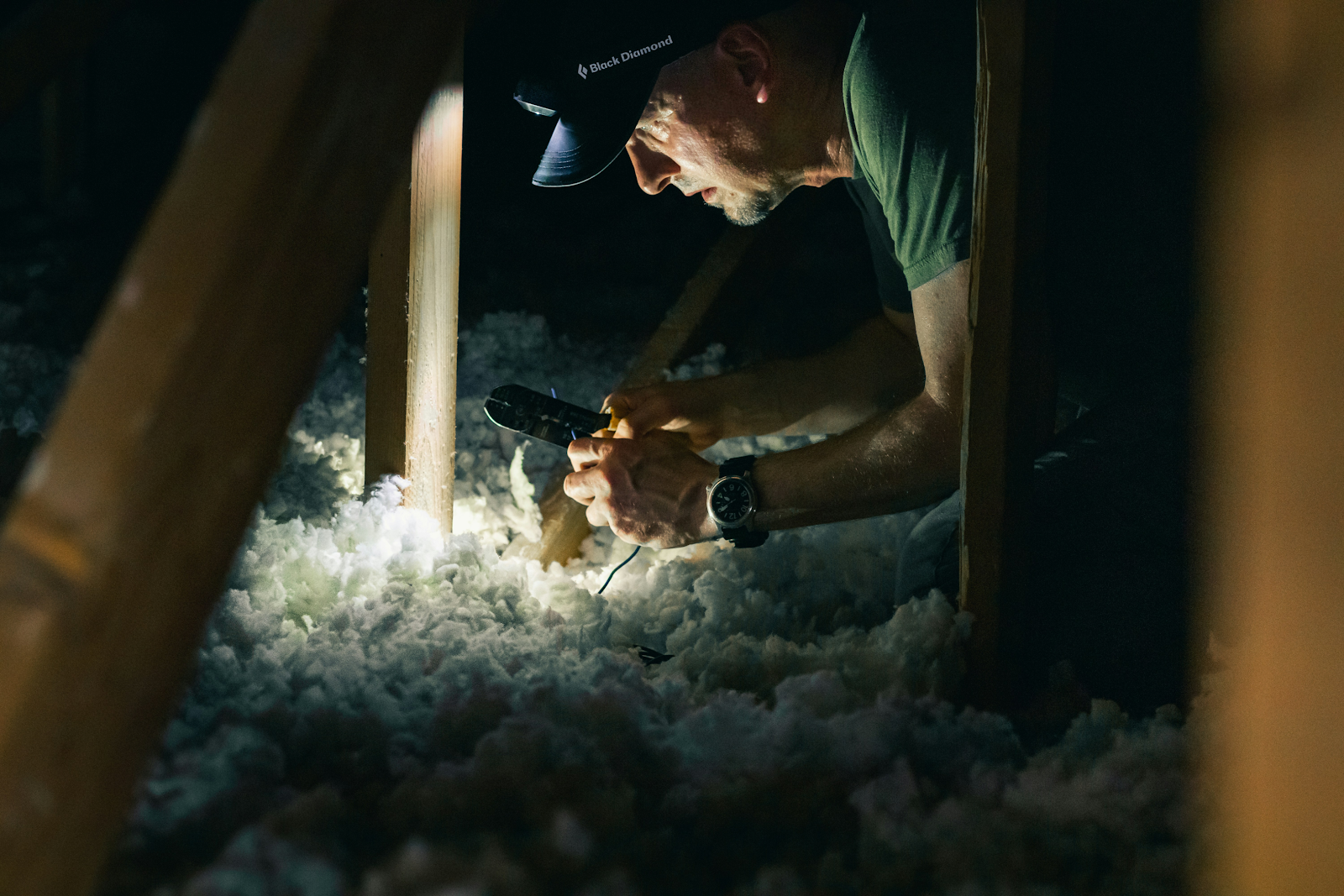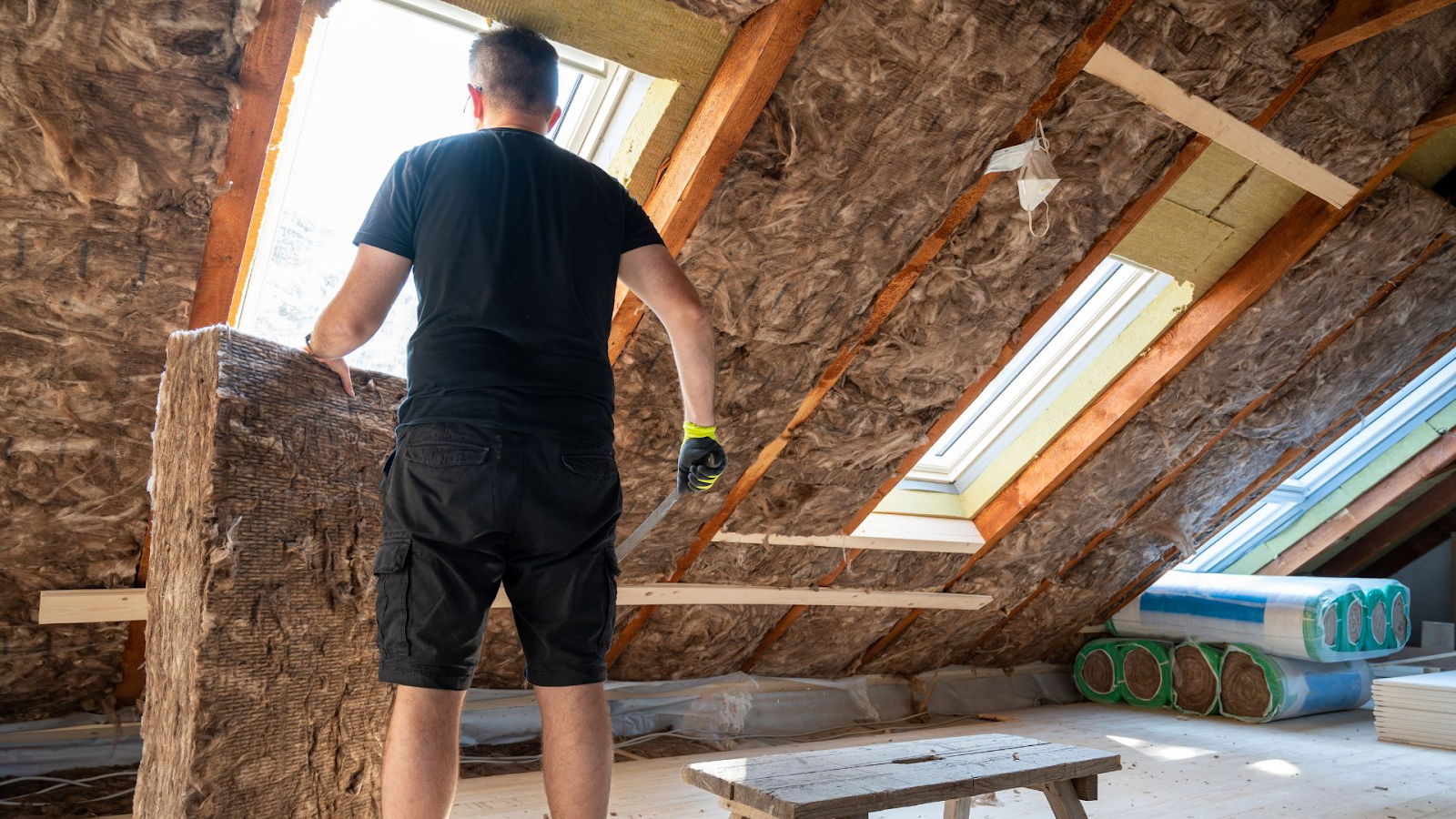The Ultimate Guide To Attic Insulation In Texas
Discover The Ultimate Guide To Attic Insulation In Texas, Covering Everything From Types And Installation To Maintenance And Environmental Impact.
- Types of Attic Insulation
- Fiberglass Insulation
- Cellulose Insulation
- Spray Foam Insulation
- Radiant Barrier Insulation
- Considerations for Choosing the Best Attic Insulation
- Cost vs. Performance Analysis
- Longevity and Durability Factors
- Installing Attic Insulation
- DIY vs. Professional Installation
- Pre-Installation Preparations
- Installation Process
- Evaluating Attic Insulation Efficiency
- Government Incentives and Rebates
- Environmental Impact of Attic Insulation
- Advantages of Proper Attic Insulation
- Improved Indoor Comfort
- Enhancing Property Value
- Common Attic Insulation Mistakes to Avoid
- Incorrect Installation Techniques
- Neglecting Ventilation Requirements
- Maintenance Tips for Attic Insulation
- Upgrading Attic Insulation for Texas Weather Conditions
- Understanding R-Value and Its Significance
- Conclusion
Discover the ultimate guide to attic insulation in Texas, covering everything from types and installation to maintenance and environmental impact.
In the sweltering heat of a Texas summer or the surprisingly brisk winter days, attic insulation becomes a critical component of your home's comfort and energy efficiency. Proper attic insulation doesn't just retain heat during colder months; it also keeps your home cooler when the mercury rises. Beyond temperature control, attic insulation can significantly reduce energy bills, prevent moisture-related issues, and even lessen the strain on your HVAC system, ensuring it lasts longer.
The choice of attic insulation in Texas is influenced by a variety of factors, from the relentless sun and heat to occasional cold snaps. The state's size means climate can vary significantly, making the selection of insulation material and strategy crucial. Understanding local weather patterns, the age of your home, and even your roof type can guide the best insulation choices for efficiency and comfort.
Types of Attic Insulation
From affordable fiberglass to eco-friendly cellulose and the airtight seal of spray foam, homeowners in Texas have a range of choices when it comes to selecting the right type of insulation to enhance energy efficiency and comfort. Here are the attic insulation types available for consideration.
Fiberglass Insulation
Comprising fine glass fibers, fiberglass insulation is a popular choice for its affordability and effectiveness. It's available in batts or rolls that fit snugly between attic rafters, trapping air and reducing heat transfer.
Cellulose Insulation
Made from recycled paper products, cellulose insulation is treated for fire resistance and offers an eco-friendly insulation option. It's particularly effective for blown-in applications, filling in gaps and providing excellent thermal performance.
Spray Foam Insulation
Spray foam expands to fill cavities, cracks, and gaps, making it ideal for sealing air leaks in addition to insulating. It's available in open-cell and closed-cell options, with the latter providing higher R-value and moisture barrier properties.
Radiant Barrier Insulation
Specifically designed to combat the intense Texas sun, radiant barriers reflect heat away from your home. Installed under the roof, they can significantly reduce the burden on your cooling system during hot summer months.

Considerations for Choosing the Best Attic Insulation
When selecting attic insulation for your project to install attic insulation, it's crucial to consider the specific needs of your home, including factors such as proper insulation type, installation method, and compatibility with existing structures. Homes in the southern regions may prioritize insulation that effectively combats intense heat, while those in the north may focus on retaining warmth during cooler months.
Cost vs. Performance Analysis
Balancing cost with performance is needed when choosing attic insulation. While high-quality insulation may have a higher upfront cost, it can lead to long-term energy savings and improved comfort, reducing energy costs over time. Homeowners should weigh the initial investment against potential benefits over time.
Longevity and Durability Factors
Opting for attic insulation with longevity and durability is essential for ensuring sustained performance. Considering factors such as resistance to moisture, pests, and settling can help prolong the lifespan of the insulation, reducing the need for frequent replacements.
Installing Attic Insulation
When it comes to installing attic insulation for your attic insulation work, thorough pre-installation preparations are important for optimal performance. Whether you opt for DIY or professional installation depends on factors like insulation type, project complexity, and personal skill level.
DIY vs. Professional Installation
Deciding between DIY and professional installation of attic insulation hinges on several factors, including the type of insulation you're planning to use and the complexity of your attic space. DIY projects can be cost-effective and rewarding, particularly for simpler insulation types like fiberglass batts or rolls, which are straightforward to handle and install. However, they require keen attention to detail and adherence to safety protocols to avoid any mishaps or inefficiencies.
On the other hand, professional installation is advisable for more complex projects, such as applying spray foam insulation or tackling attics with hard-to-reach areas. Professionals bring not only the necessary equipment but also a wealth of experience, ensuring that the job is done safely and effectively, albeit at a higher cost.
Pre-Installation Preparations
Preparation is important to a successful installation. Begin by inspecting the attic for moisture, leaks, or damage, addressing any issues upfront. Ensure adequate ventilation to prevent heat and moisture buildup. Clearing the attic of debris and old insulation creates a clean workspace for accurate measurement and installation. Sealing air leaks around fixtures, pipes, and ducts maximizes your new insulation's efficiency.
Installation Process
The installation starts with measuring the attic to calculate the necessary amount of insulation, considering the recommended R-value for your area. For batts or rolls, cut the insulation to fit between joists, ensuring no gaps. If adding over existing insulation, lay new layers perpendicular to cover gaps and improve efficiency.
Professional help is advisable for spray foam due to its complexity. For radiant barriers, staple the material under the roof rafters, reflective side down, to reflect heat away. After installation, check for missed spots, ensuring soffit vents are not covered to maintain proper ventilation.
Evaluating Attic Insulation Efficiency
To ensure your attic insulation performs optimally, assessing its energy efficiency is crucial. This can be done by observing your home's energy bills for unexpected increases or by having an energy audit conducted, which can highlight how well your insulation is working.
Identifying and addressing insulation issues is a critical next step. Look for signs of wear, such as uneven temperatures in your home, ice dams in winter, or areas where insulation may have settled or become compacted over time. Fixing these issues often involves adding more insulation or replacing sections that are no longer effective.
Regular monitoring and maintenance of insulation performance are essential for long-term efficiency. This includes periodic checks for moisture, which can reduce insulation effectiveness, and ensuring vents are not blocked to maintain proper attic ventilation.
Government Incentives and Rebates
Government incentives and rebates significantly reduce the cost of attic insulation upgrades, making them more accessible to Texas homeowners. Various programs offered by state and local governments, utilities, and energy efficiency organizations include rebates, tax credits, and financing options aimed at enhancing energy efficiency through attic insulation improvements.
To qualify for these incentives, homeowners must typically use approved insulation materials, meet certain energy efficiency targets, or employ certified contractors. It's essential to review the specific requirements and eligibility criteria of each program to comply and maximize potential savings on attic insulation upgrades.
Environmental Impact of Attic Insulation
Considering the environmental impact of attic insulation is a must for homeowners looking to make eco-conscious choices. Opting for sustainable insulation materials not only minimizes carbon emissions but also conserves resources, significantly contributing to environmental conservation and promoting a healthier planet.
When selecting insulation, it's vital to consider the production process, recyclability, and the material's overall lifecycle to assess its environmental footprint. Sustainable options such as recycled denim, cellulose from recycled paper, or natural wool not only provide effective insulation but also reduce the environmental impact.
Advantages of Proper Attic Insulation
Proper attic insulation offers numerous advantages, including significant energy savings, as exemplified by reduced heating and cooling costs. This translates into not only lower utility bills but also a quicker return on investment, offsetting the initial attic insulation cost over time. By investing in the best insulation for your attic, you're not only saving money but also enhancing your home's energy efficiency, comfort, and value.
Improved Indoor Comfort
Effective attic insulation creates a more consistent indoor temperature, reducing drafts and cold spots in the winter and keeping interiors cooler in the summer. This leads to enhanced comfort for occupants throughout the year, regardless of external weather conditions.
Enhancing Property Value
Investing in proper attic insulation improves energy efficiency and comfort and also enhances the overall value of the property. Potential buyers are attracted to homes with efficient insulation systems, making them a valuable asset in real estate transactions.
Common Attic Insulation Mistakes to Avoid
Properly assess insulation needs to ensure adequate coverage and improved energy efficiency. Ensure thorough insulation coverage to avoid heat loss or gain, especially in regions with extreme climates like Texas.
Incorrect Installation Techniques
Improper installation techniques, such as compressing insulation or leaving gaps and voids, can compromise effectiveness and lead to energy wastage. Follow manufacturer guidelines and seek professional assistance if unsure to ensure proper installation and maximum performance.
Neglecting Ventilation Requirements
Ignoring ventilation requirements in the attic can result in moisture buildup, leading to mold growth, wood rot, and structural damage. Proper ventilation is essential for maintaining attic health and preserving the integrity of the insulation.
Maintenance Tips for Attic Insulation
Regular inspection and maintenance are important for optimal attic insulation. Homeowners should periodically check for any issues and repair or replace any damage immediately. Proper ventilation is also helpful to avoid moisture-related issues. By following these tips, homeowners can maintain energy efficiency and a comfortable living environment. Materials that resist heat, combat humidity, and withstand extreme weather. This ensures energy efficiency and year-round comfort in your home.
Upgrading Attic Insulation for Texas Weather Conditions
When upgrading the insulation, choose insulation materials with high R-values to effectively resist heat transfer and maintain cooler indoor temperatures during Texas' hot summers. Consider reflective or radiant barrier insulation to minimize heat absorption. Select insulation options that resist moisture absorption and promote airflow to prevent humidity buildup in the attic. Ensure proper ventilation and consider using moisture-resistant materials to mitigate the risk of mold and mildew growth.
Look for durable insulation materials that can withstand Texas' occasional extreme weather events, such as strong winds or hailstorms. Consider reinforcing insulation with weather-resistant barriers to provide additional protection against external elements.
Understanding R-Value and Its Significance
R-value measures the insulation material's ability to resist heat flow. It's calculated based on the material's thickness and thermal conductivity. The higher the R-value, the better the insulation's thermal resistance. Determining the optimal R-value depends on factors like climate zones, local building codes, and energy efficiency goals. Consult with professionals to ensure the chosen R-value meets or exceeds recommended standards for maximum energy savings and comfort.
Conclusion
In Texas, where weather extremes can challenge the comfort of any home, the importance of proper attic insulation cannot be overstated. This traversed the essentials of choosing and installing the right insulation to withstand Texas's heat, humidity, and occasional cold snaps. Homeowners can ensure their homes remain energy-efficient and comfortable year-round by selecting the appropriate materials like fiberglass, cellulose, spray foam, or radiant barriers.
Installation choices, whether DIY or professional, require careful consideration of your home's specific needs and local climate conditions. Maintenance, including regular inspections and addressing any wear or tear, is crucial to sustaining insulation effectiveness.
Overall, proper insulation in the attic not only saves energy and increases comfort, but also boosts property value. This makes it a smart investment for homeowners in Texas!
Maximize Your Home's Efficiency: Explore Superior Attic Today!

